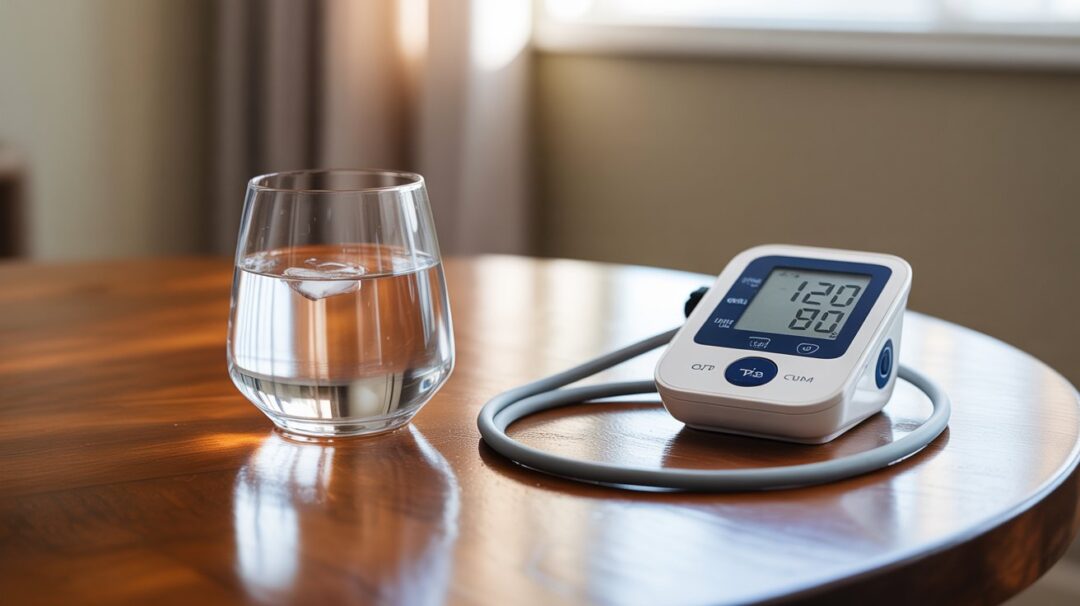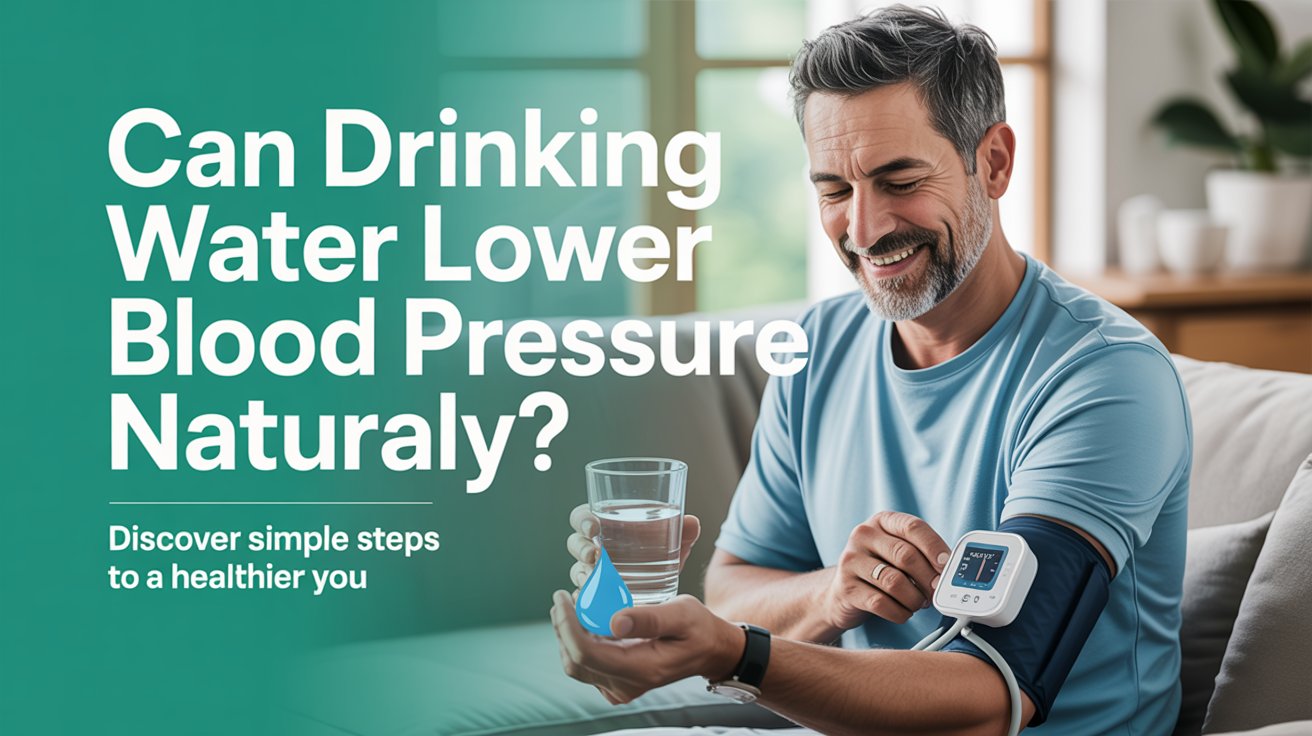Can Drinking Water Lower Blood Pressure Naturally?
Have you ever wondered if something as simple as drinking water could be the key to managing your blood pressure naturally? Blood pressure is a common health concern that many people face, and finding natural ways to lower it is a priority for a growing number of individuals. By understanding how water affects blood pressure, you might find new habits to enhance your overall well-being.
Understanding Blood Pressure
Before diving into how water impacts blood pressure, it’s important to comprehend what blood pressure is and why managing it is crucial for your health. Blood pressure is the force exerted by circulating blood on the walls of blood vessels. It’s measured in millimeters of mercury (mmHg) and recorded with two numbers: systolic and diastolic pressures. Systolic pressure (the top number) represents the pressure when your heart beats, while diastolic pressure (the bottom number) reflects the pressure when your heart rests between beats.
Why is Blood Pressure Important?
Maintaining normal blood pressure is essential as it helps your heart and other organs receive adequate oxygen and nutrients. High blood pressure, or hypertension, is a significant risk factor for heart disease, stroke, and other health problems. Thus, it’s vital to keep your blood pressure within a healthy range.
Blood Pressure Categories
To help you better understand what your numbers mean, here’s a table that categorizes the different levels of blood pressure:
| Category | Systolic (mmHg) | Diastolic (mmHg) |
|---|---|---|
| Normal | Less than 120 | Less than 80 |
| Elevated | 120-129 | Less than 80 |
| Hypertension Stage 1 | 130-139 | 80-89 |
| Hypertension Stage 2 | 140 or higher | 90 or higher |
| Hypertensive Crisis | Higher than 180 | Higher than 120 |
Understanding these measurements can help you take active steps in managing your blood pressure, especially if it’s elevated.
The Connection Between Water and Blood Pressure
Water, a vital component of life, plays a crucial role in your body’s physiological processes. But how exactly does it relate to blood pressure?
Hydration and Blood Volume
Your body’s blood volume is heavily influenced by its hydration levels. When you’re dehydrated, your blood volume can decrease, leading to a humble increase in heart rate to compensate, and ultimately, this strain can result in higher blood pressure over time. Conversely, staying well-hydrated ensures your blood volume is optimal, supporting healthy blood pressure levels.
Water Supports Kidney Function
The kidneys are essential for regulating blood pressure, as they control the body’s fluid levels and maintain salt balance. Drinking enough water assists your kidneys in filtering waste from the blood and excreting excess sodium, which can lead to lower blood pressure.

Can Drinking Water Alone Lower Blood Pressure?
While drinking water is a foundational element for maintaining overall health, relying on water alone to manage blood pressure may not be sufficient for everyone. However, it can be a part of a broad strategy to improve blood pressure alongside other lifestyle changes.
Factors to Consider
- Diet: Consuming a balanced diet rich in fruits, vegetables, whole grains, and lean proteins, while low in sodium, can enhance the blood pressure-lowering effects of adequate water intake.
- Exercise: Regular physical activity strengthens your heart, enabling it to pump more efficiently and potentially lower blood pressure.
- Weight Management: Maintaining a healthy weight reduces the workload on your heart, aiding in blood pressure control.
- Stress Management: Chronic stress can increase blood pressure, so incorporating stress-reduction techniques such as meditation or yoga can be beneficial.
Thus, while drinking water is a key player, a holistic lifestyle approach is necessary for significant reductions in blood pressure.
How Much Water Should You Drink?
Determining the right amount of water to drink can vary depending on several factors like age, gender, activity level, and health status. Here’s a general guideline to help you tailor your water intake:
General Recommendations
The National Academies of Sciences, Engineering, and Medicine suggests the following daily water intake from all beverages and foods:
- Men: Approximately 3.7 liters (or about 13 cups)
- Women: About 2.7 liters (or around 9 cups)
Listening to Your Body
Your body’s needs can change daily based on factors like the weather, physical activity, or illness. Thirst is a natural signal to hydrate, but try not to solely rely on thirst; habitual hydration practices are necessary for maintaining consistent blood volume.

Signs of Dehydration
Recognizing the signs of dehydration can be crucial in preventing its negative effects on your blood pressure. Here are some common symptoms to watch for:
- Dry mouth and skin
- Fatigue
- Lightheadedness
- Urine that is dark yellow
- Headaches
If you experience any of these symptoms, increasing your water intake can help rehydrate and support better blood pressure management.
Enhancing Water with Electrolytes
Hydration isn’t solely about water; electrolytes play a pivotal role in maintaining fluid balance and healthy blood pressure levels. Important electrolytes include sodium, potassium, calcium, and magnesium.
Sodium and Potassium Balance
While sodium is often associated with increased blood pressure, maintaining a balance with potassium is crucial. Potassium helps counteract the effects of sodium and encourages blood vessel relaxation.
Sources of Potassium
Incorporate these potassium-rich foods into your diet for better blood pressure control:
| Food | Potassium Content (mg) |
|---|---|
| Bananas | 422 |
| Sweet potatoes | 448 |
| Spinach | 540 |
| Avocados | 708 |
| Beans | 485 |
By balancing your electrolytes alongside drinking water, you can effectively support blood pressure management.
Habit Changes for Better Hydration
To make staying hydrated a seamless part of your routine, consider these tips:
Infuse Your Water
Adding natural flavors to your water, such as lemon, cucumber, or mint, can make drinking water more enjoyable and encourage higher consumption.
Develop a Routine
Linking water intake to specific parts of your day, such as before meals or after workouts, can help build a consistent hydration habit.
Use Technology
Take advantage of apps or smart water bottles designed to remind you to drink water throughout the day, ensuring you meet your hydration goals.
Conclusion
While drinking water alone won’t guarantee perfect blood pressure control, it is a valuable component of a holistic lifestyle aimed at promoting cardiovascular health. Combining regular hydration with a nutritious diet, regular exercise, and effective stress management, you can create a natural regimen that supports healthy blood pressure levels and enhances overall well-being. Remember, it’s the combination of healthy habits that creates a profound impact on your health.
Understanding the important interplay between hydration and blood pressure can empower you to make informed decisions, leading you toward a healthier lifestyle. Drink up and support your body’s natural processes; the journey to better health can be as refreshing as a glass of water.

